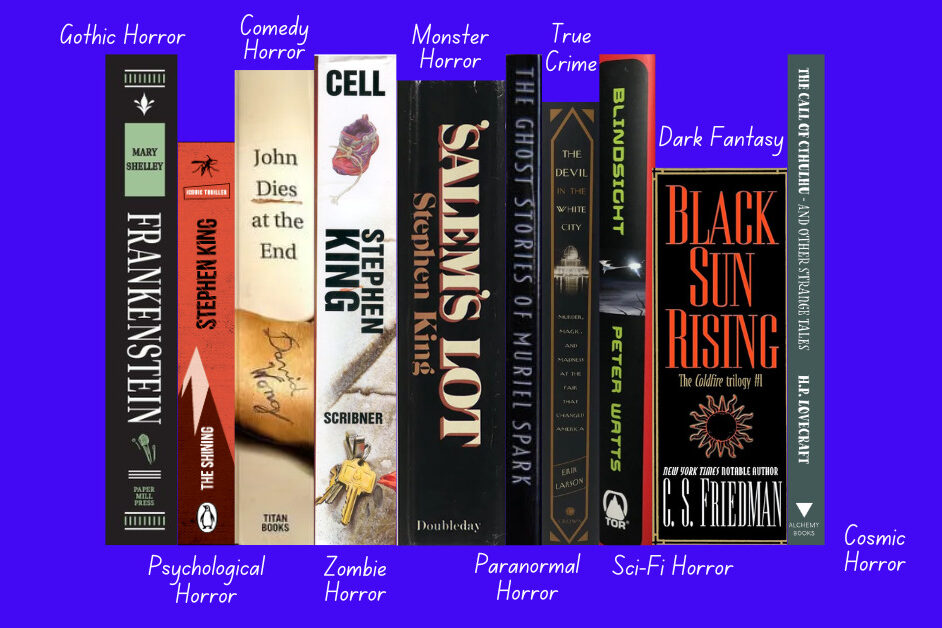
When it comes to the world of horror genres, there are many to choose from. Feelings of dread, suspense, repulsion, and terror are commonplace with each sub-genre aiming to elicit some type of fearful response.
Horror sub-genres range in intensity and experience with cosmic horror, for example, dealing with the unknown and abstract, whereas zombie horror presents a very real and tangible enemy.
On that note, here are the most popular types of horror genres and what makes them unique.
1. Gothic Horror
Some of the most well-known horror stories belong to the gothic horror genre which arose out of romanticism and often combines the new world with the old world.
Mary Shelley’s Frankenstein is a perfect example of this genre and shares a romanticized view of the power of science and the horrors that it could produce. Dracula by Bram Stoker, is another favorite and is arguably the most popular vampire story to date.
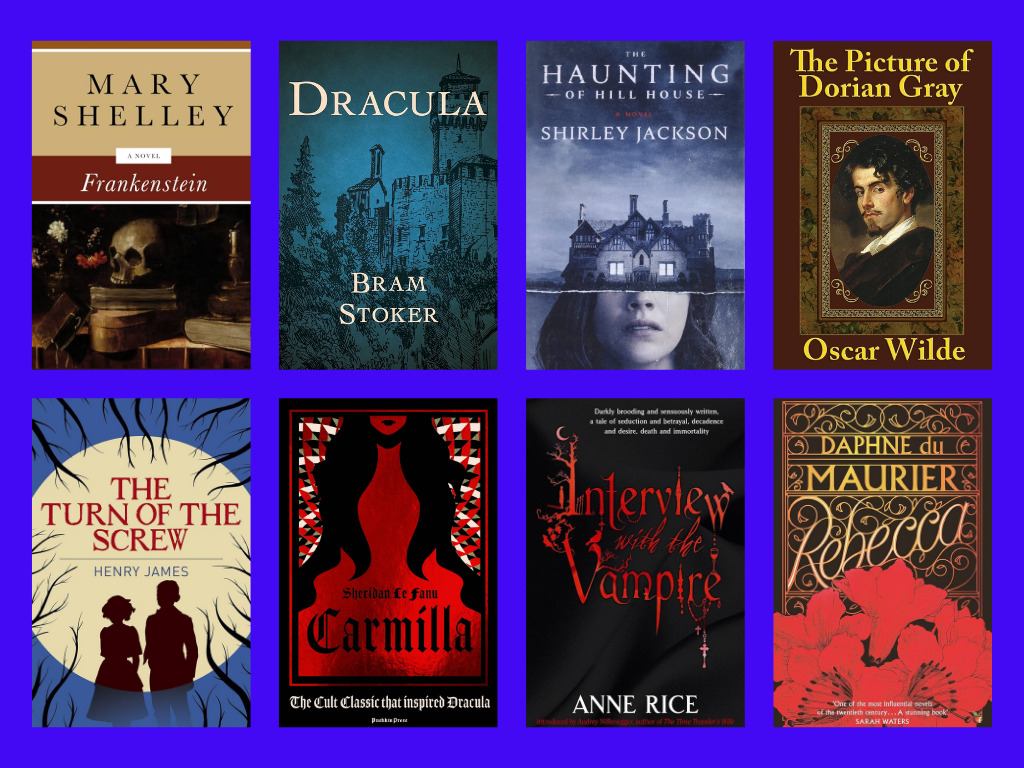
2. Psychological Horror
Psychological horror heavily focuses on the mental distress of the character and often relies on suspense and anxiety to heighten the fear of the reader.
Mine by Robert McCammon, for example, shows the monstrous decent of what a mother will do to get back her child. Last Days by Brain Evenson shares the story of a detective who has to give up parts of his own body—one by one—to infiltrate a cult.

3. Comedy Horror
Though it may seem contradictory, the comedy horror genre mixes bizarre horrific elements with comedic events to produce both laughs and fear.
Jason Wong’s John Dies at the End is one such example that involves two college dropouts, strange drugs, and an alien invasion. Horrorstör by Grady Hendrix is set in the scary world of retail where three employees volunteer to take the night shift only to encounter strange occurrences and nightmares.
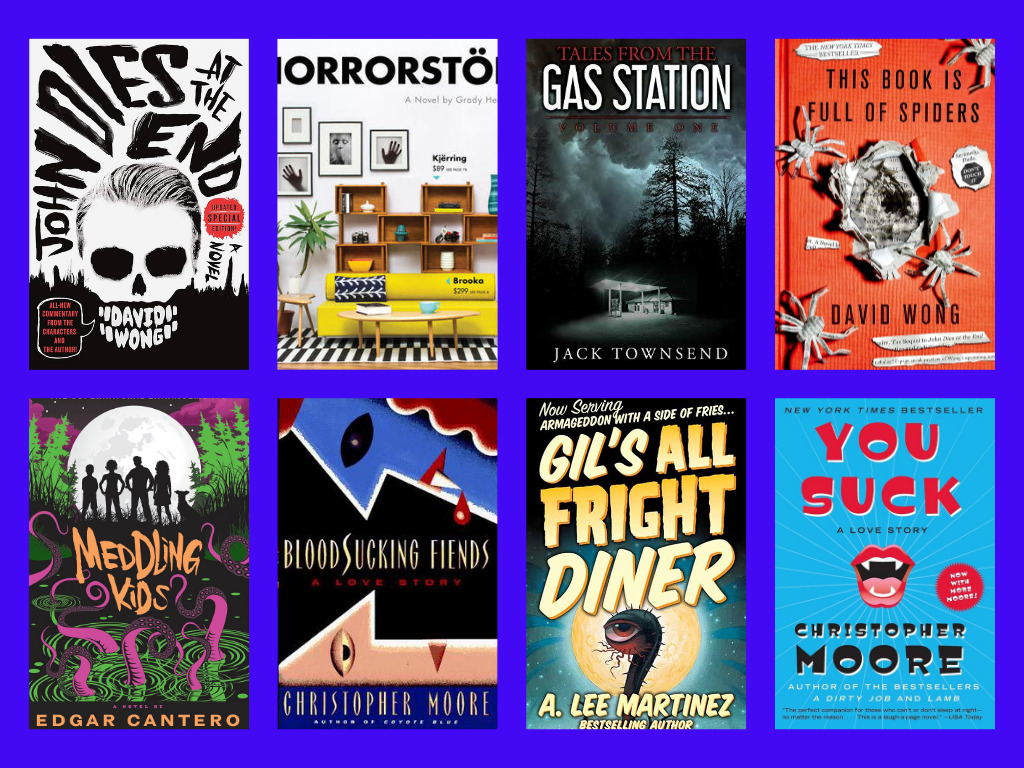
4. Zombie Horror
Some of the most popular survival horror stories fall under the zombie horror sub-genre—often taking place in an apocalyptic setting where the characters have to survive and fight against the undead.
Stephen King’s Cell follows the story of a father trying to get back to his son through zombie-infested lands. World War Z by Max Brooks is a classic and shares the story of survivors of a zombie apocalypse from across the world.

5. Monster Horror
Filled with unnatural monstrosities, the monster horror genre tends to invoke fear from the monsters and creatures found within the story.
A great example of this is Salem’s Lot by Stephen King. The story is set in 1975 and is about a vampire that terrorizes a small town in Main. Josh Marlerman’s Bird Box is another popular example that involves creatures that, if seen, will make you go mad.

6. Paranormal Horror
Going beyond the scientifically explainable, paranormal horror often features ghosts, possessions, witches, and other supernatural elements.
Muriel Spark’s Ghost Stories is one such example featuring a series of short stories all dealing with ghosts. The Changeling by Victor LaValle follows the story of a father (Apollo), his wife, and his daughter and the paranormal events that affected the household after the death of Apollo’s father.
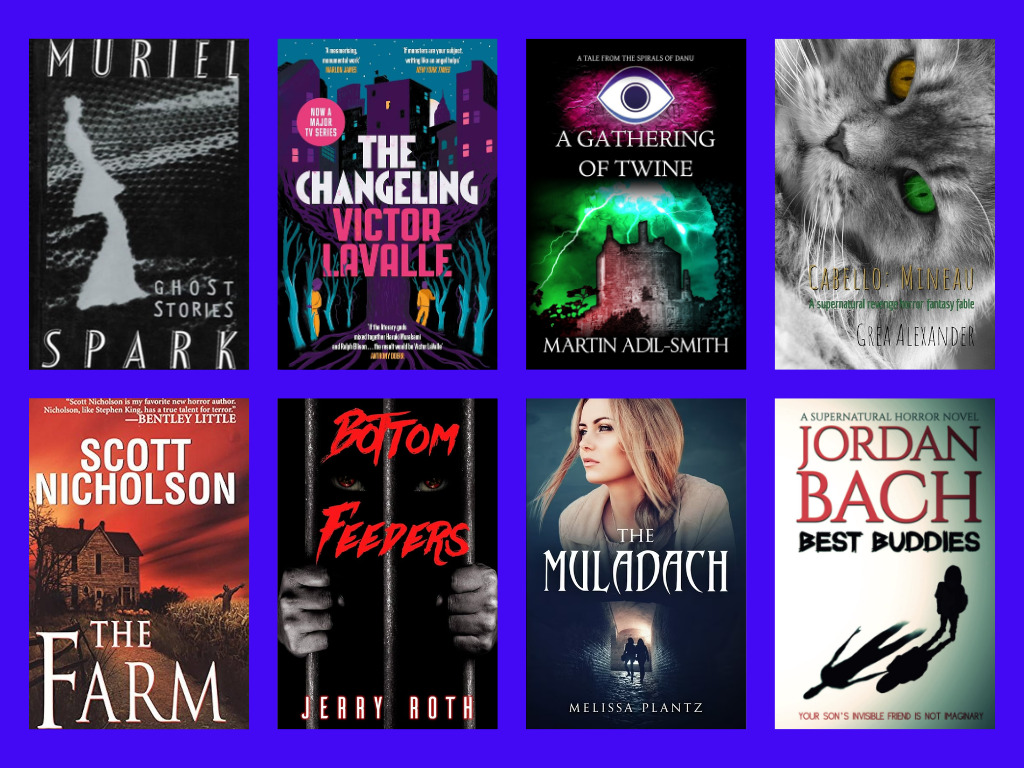
7. True Crime
While most genres of horror lay in the fictional realm, true crime does not. The genre follows horrific events based on real-life crimes.
Maureen Callahan’s American Predator shares the life of Israel Keys—a brutal 21st-century American serial killer. The Devil in the White City by Erik Larson also follows the story of a serial killer who tricked his victims by pretending to be a doctor.

8. Sci-Fi Horror
Sci-fi horror often involves stories of mad scientists, aliens, and futuristic technology. George R. R. Martin’s Nightflyers is a perfect example, combining aliens, an autonomous spacecraft, astronauts, and unexplained murder.
Blindsight by Peter Watts deals with the nature of consciousness as 22nd-century humanity investigates a bizarre ship and race of aliens.
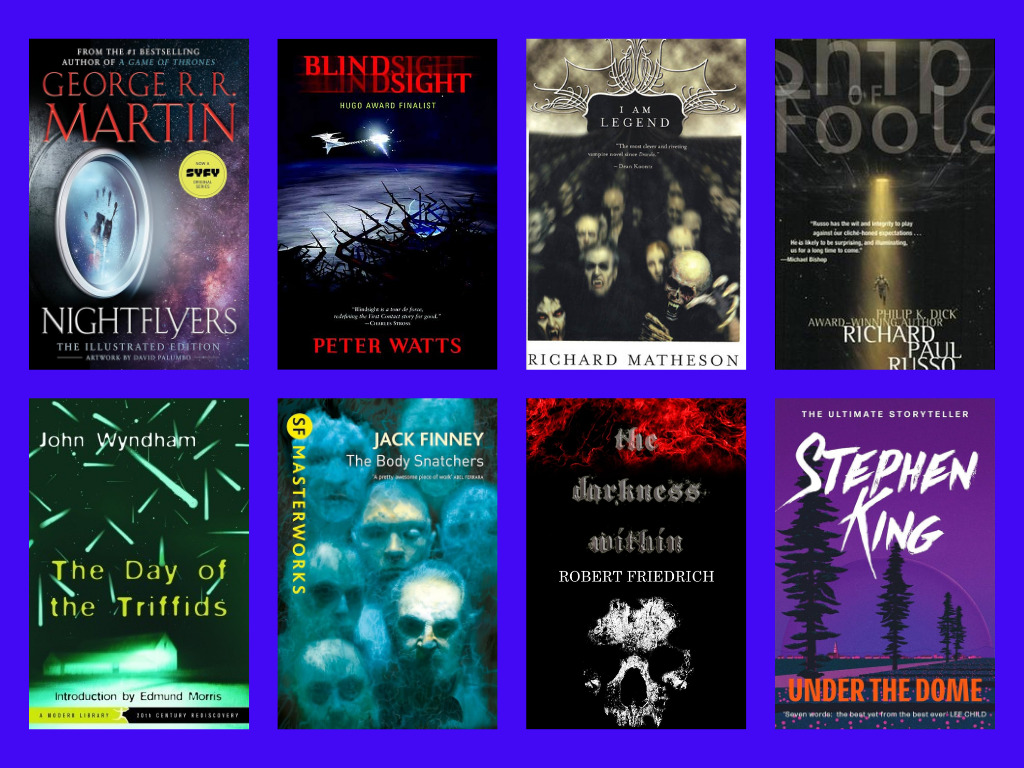
9. Dark Fantasy
Combining fantasy elements like magic and other worlds with horror, the dark fantasy genre often takes place in different worlds and gains inspiration from myths and fairy tales.
The Citadel of Fear by Gertrude Barrows, for example, involves a hidden Aztec city and the dark god of that city. Then there are stories like the Black Sun Rising by C. S. Friedman which is set in a fantasy world that will bring an individual’s worst nightmares to life.
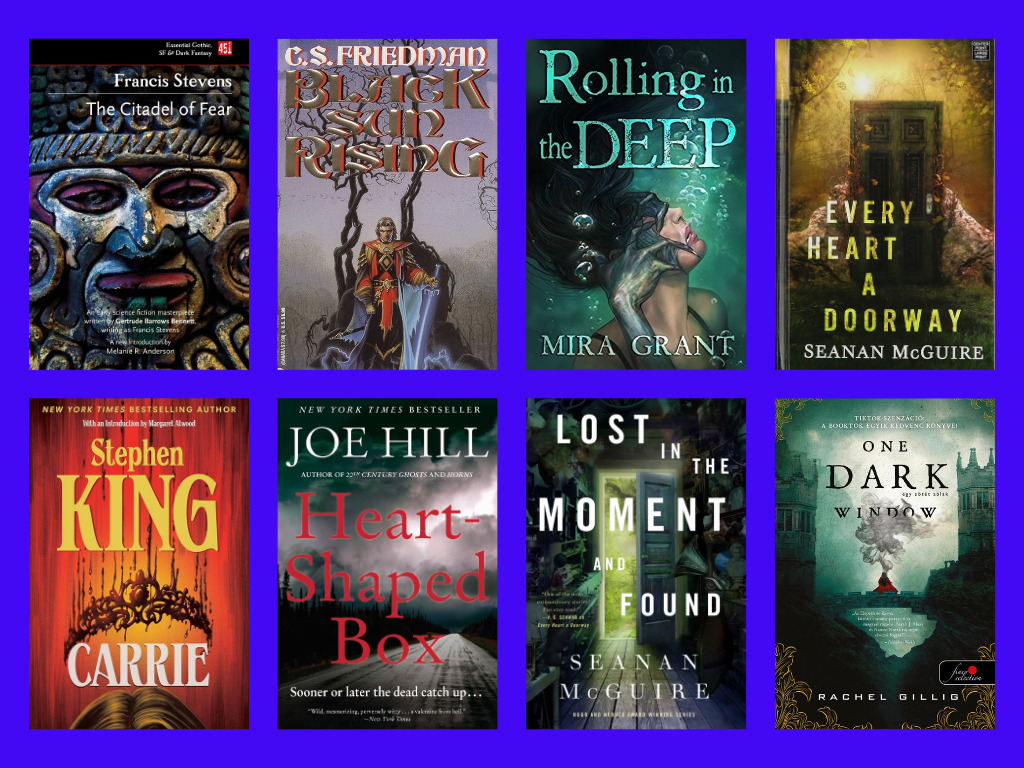
10. Cosmic Horror
Cosmic horror preys on the fears of the unknown—where the evil or darkness tends to be abstract in nature. H. P. Lovecraft’s The Call of Cthulhu is a perfect example which looks at a mysterious creature with tentacles and dragon wings that is in one way or another, subconsciously connected to many people.
Songs of a Dead Dreamer and Grimscribe by Thomas Ligotti is another example that reveals the horror of the human condition and the meaninglessness of the world.
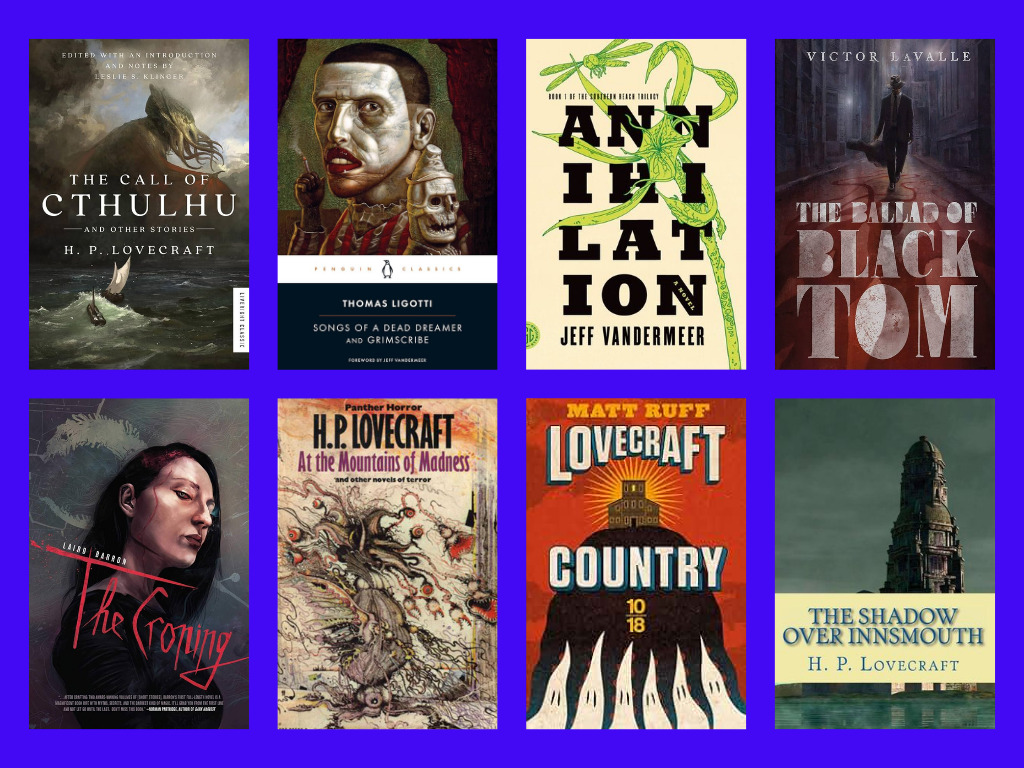
Final Thoughts
The many genres of horror can range dramatically from the more brutal and grotesque in nature to the subtle and psychologically eerie.
With that said, businesses, libraries, and individuals can categorize horror books by the sub-genre to better organize, find, and share relevant books with customers and friends.
Further reading:
See also types of fiction, types of non-fiction, and fantasy genres.
Read more about book classification and book data.




